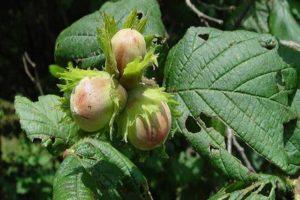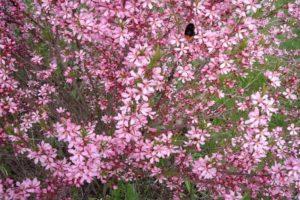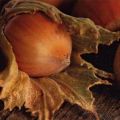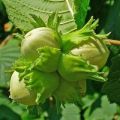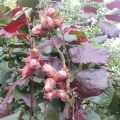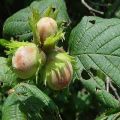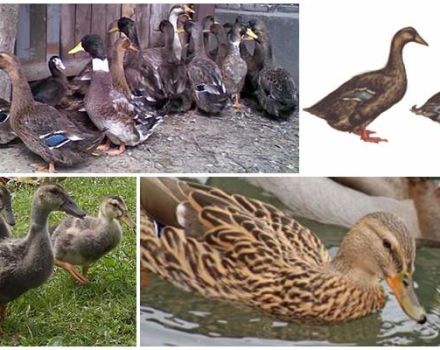Description of the variety of common hazel Kontorta, planting and care
The unique luxurious shrub of the common hazel variety Contorta is a frequent participant in landscape design. The extraordinary beauty and charm of the winter garden are given by its spectacular curly shoots with chic curls, twisted in different directions. The amazingly shaped branches are often used as filling for exquisite bouquets.
Description of common hazel Contorta
The Kontorta hazelnut will not give beginner gardeners a lot of trouble and care. It is a uniquely shaped perennial shrub that grows up to 3.5 meters in height. The hazel bush grows slowly and unhurriedly. In regions with strong winds and frosts, the plant height does not exceed 1.8 meters. Its root system is superficial, with highly branching roots.
The plant is endowed with dark green wrinkled leaves and many long catkins covered with yellow pollen in summer. In spring, the hazel shrub blooms late. Blooms, as a rule, before the leaves bloom, in March or April. The shoots, unique in shape, gracefully bend and look spectacular against the background of ordinary trees.
The shrub requires cross-pollination and requires the participation of several plants.
For reliable pollination, several hazel bushes are planted simultaneously in one area. An excellent pollinator for this variety is wild hazel.
Сontorta can take various forms. With the help of formative pruning, this extraordinary in its beauty shrub is easy to adjust and clearly fit into the overall design of the garden area.
The main pros and cons of the variety
The main advantage of growing hazel in a suburban area can be appreciated in the winter period, when most of the trees are without foliage and look unattractive. During this period, Contorta hazel gains a special charm and beauty.
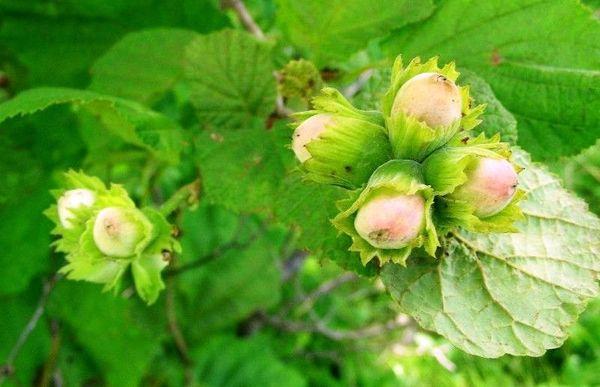
The shrub is grown mainly to decorate the garden area, although with careful care it can please summer residents with small oblong nuts.
In regions with low temperatures, annual shoots freeze out annually. The growth of hazel is significantly slowed down. However, branching increases, the shoots of the bush acquire unique forms.
The nuances of growing a crop
The variety is very sensitive to light, soil moisture, and negative temperatures. For timely development and intensive fruiting, it requires careful attention throughout life.
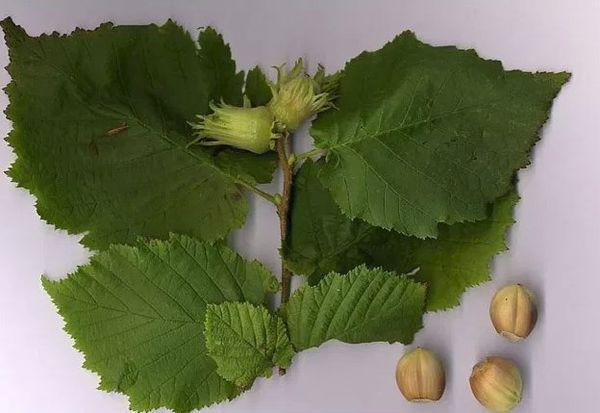
When and where to plant?
The shrub feels great and thrives in sunny meadows or in partial shade, protected from strong winds by a fence or trees. In an open area, there is a high probability of annual freezing of immature shoots and slow growth of the shrub. When growing this variety in the shade, there are problems with fruiting. A quiet, not ventilated place will allow you to grow a healthy tree - the real pride of a gardener.
Contorta hazel needs fertile, humus-fertilized soils. Sandy loam and loamy soil with neutral acidity are ideal for growing. Poorly tolerates wetlands and low groundwater levels. Prolonged exposure to spring waters on the root system causes its decay, and often the death of the tree.
Preparation of planting material
The seedling needs preliminary preparation for planting. Its roots are placed in a wet mixture of clay, ash and Kornevin for at least half an hour. If the seedling has been outdoors for a long time and its roots have dried out - for a day.
The purchase of a healthy seedling with an earthen clod does not require preliminary preparation and guarantees a high survival rate.
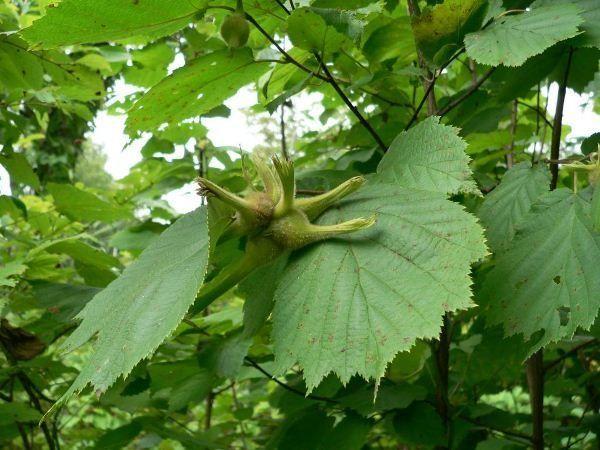
Landing specifics
The shrub is best planted outdoors in early spring. By the beginning of the first frosts, it will get stronger, gain strength, and develop a strong root system. For the normal development of a wide crown, a lot of free space is required, so the seedlings are planted at a distance of three meters from each other.
A planting hole for a seedling is prepared in advance. For spring planting - from autumn. The earth is carefully fertilized with humus and ash, and vermiculite is added. Depending on the characteristics of the soil, its acidity is regulated. For the timely development of the roots, the seedling needs a pit 30 cm deep and 60 cm in diameter.
When buying hazel in a container, the seedling is carefully removed and placed in a planting pit without destroying the earthen lump. When planting an ordinary seedling, the hole is partially filled with soil, forming an earthen hill. The root system is evenly distributed over it and covered with earth. The root collar is not buried, leaving it at a height of about three centimeters above ground level. The seedling is thoroughly spilled with water with the addition of "Kornevin".
Tips for caring for hazel
Hazel Kontorta is unpretentious in care, however, gardeners will have to try hard to get fruit.
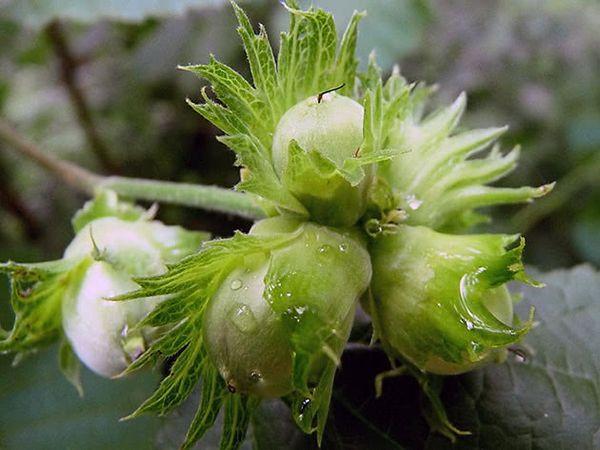
Watering
Hazel is a moisture-loving plant and requires periodic watering. After planting, you must carefully monitor the soil and prevent it from drying out. Watering from March to September is especially relevant when growing shrubs in elevated areas, sandstones and during prolonged droughts.
After applying the autumn portion of fertilizers, hazel needs the last abundant watering. So the assimilation of introduced microelements is accelerated, the plant is saturated with moisture before a long frosty winter.
Fertilizers
When preparing the soil for planting in the fall, it is fertilized with humus, superphosphate and potassium salt are added. For the formation of full-fledged fruits annually in June, hazel is fed with urea. At the end of summer, complex fertilizers are used.

Mulching
Experienced gardeners, when growing hazel and other garden trees, practice mulching the trunk circle. Mulching simultaneously performs several tasks:
- retains moisture in the soil;
- saturates it with oxygen;
- protects the root system from freezing;
- prevents the washing off of the upper layers of the soil during the spring flood;
- during decomposition, enriches the soil with nutrients.
Sawdust, dry grass, leaves, humus, straw, peat are used as mulch.
Preparing for winter
To protect against prolonged frosts and dry out the bark in the fall, young hazel is insulated with a covering material.It perfectly lets in fresh air, prevents the bark from drying out near the root collar and protects the shrub from freezing.
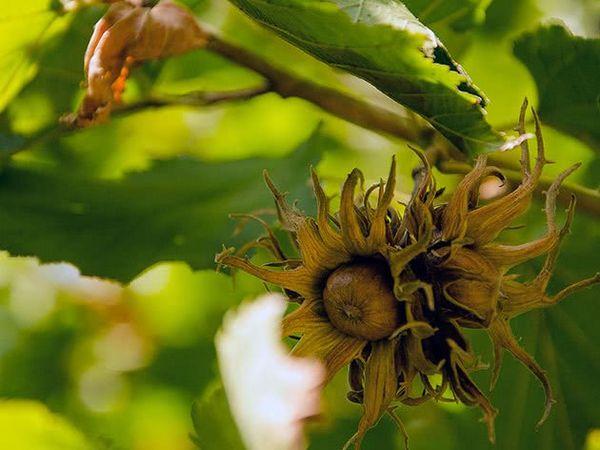
Diseases and pests
The variety is resistant to a number of diseases. However, some pests are very partial to this original shrub. Most often he is attacked by:
- aphid;
- nut weevil;
- shield;
- caterpillars of the acorn moth.
Spring spraying with systemic insecticides will help prevent the appearance of pests and keep yields at a high level.
Hazelnut Contorta is susceptible to such common diseases as:
- powdery mildew;
- moniliosis;
- brown leaf spot.
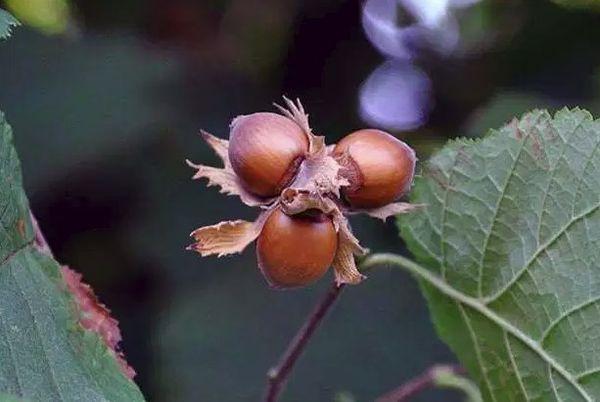
A number of preventive measures will help prevent the above diseases:
- Timely removal of fallen leaves.
- Periodic loosening of the soil or mulching.
- Autumn whitewashing of the trunk.
- Sanitary pruning of damaged and frost-bitten branches with subsequent processing with garden pitch.
- Autumn and spring spraying of the bush with Bordeaux liquid.
Strict implementation of all measures allows you to grow a healthy tree and achieve its fruiting.
Breeding methods
Hazelnut Kontorta is propagated most often vegetatively: by cuttings, grafting or layering. Seed propagation does not always guarantee the transmission of parental traits.

For grafting, you will need cuttings harvested in the fall. They are stored at low temperatures in a dry room. With the onset of the first warm days, the stalk is grafted in any convenient way, the open wound is carefully treated with garden varnish, the graft is wrapped in foil.
For reproduction of hazel by layering, young lower shoots of the shrub are bent and sprinkled with earth. As soon as the shoot takes root and takes root, the plant is separated and transplanted to a permanent place.
An overgrown shrub is easy to propagate by dividing the bush. To do this, the hazel is carefully dug up and divided into several parts. Each new bush should have strong roots at least 20 centimeters in length. The place of the cut is sprinkled with charcoal. The newly formed bushes are planted in a permanent place.
You can also propagate the variety with the help of freshly harvested nuts. In the fall, it is buried in a previously prepared and fertilized soil. With the arrival of spring, the nut will germinate and grow. However, with such reproduction, a late onset of fruiting is noted: the fruits can be obtained no earlier than after 8-10 years.

Collection and storage
It is often problematic for even experienced gardeners to achieve ripening of nuts on Kontorte hazel. The culprit is the sensitivity of the variety to external circumstances. The set fruits ripen unevenly. Harvesting often stretches from September to late October.
The collected nuts are stored at a temperature not exceeding 10 ° C in a dry room with a humidity of not more than 12-14%. Compliance with storage conditions allows you to keep the crop for several years.
The unusually beautiful Kontorta hazelnut with a spreading crown will not leave indifferent any gardener. Unpretentiousness to temperature, soil and weather conditions increases the interest and prevalence of this incredibly beautiful shrub in summer cottages in most regions.
